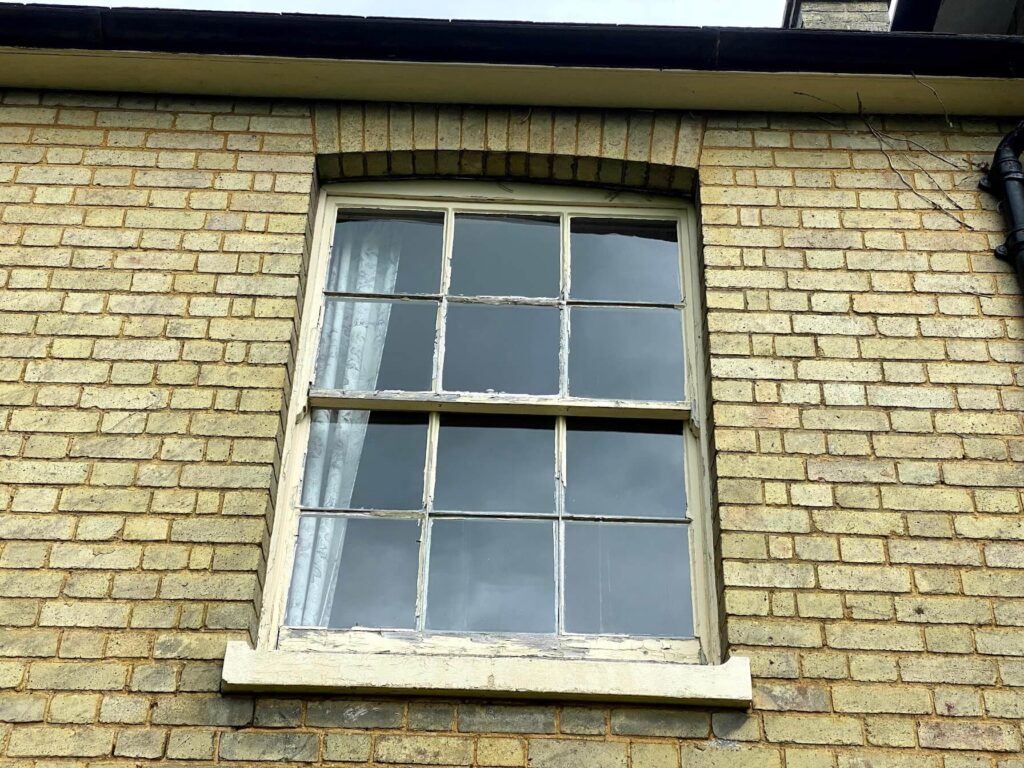Sash Windows: Structure and Key Elements
Sash Windows: Structure and Key Elements
Sash windows are a signature window design typical in quintessential British architecture. They are unique due to their movable sash – a framework that houses glass panes and moves up and down to open or close.
The sophisticated craftsmanship of a sash window hinges on the flawless combination of several essential parts. This encompasses the sturdy window frame that envelopes the sash boxes, the sealing meeting rail, and the glazing that separates the panes.

Additional fittings such as latches contribute to a seamless operation. Having knowledge of these components’ shapes and functions is crucial for accurate sash window identification, operation, and maintenance.
Window Casing
The window casing establishes the structure of the sash window, granting it its durability. This surrounding frame is generally made from wood or metal.
Primary components include vertical posts known as stiles which serve as supportive pillars on either side.
Horizontal bars, also referred to as mullions, connect the stiles at the top and bottom.
The stiles and mullions build sash boxes, with the lower box accommodating the bottom sash, and the upper box the top sash. Collectively, these framing elements provide reinforcement and stability enabling the sashes to move.
Intersection Rail
One of the crucial functions of a sash window is creating a secure seal between the top and bottom sashes when closed. This is achieved through the intersection rail, a horizontal bar present at the bottom of the top sash and the top of the bottom sash.
As the name suggests, the two intersection rails merge in the middle of the window when it is shut. This seal’s compression offers excellent resistance against air leaks, promoting energy conservation.
Glass Panes
Sash windows feature an arrangement of panes divided by thin glazing bars. Historical Georgian-style windows were made with multiple small panes, such as the traditional “six over six” configuration with six panes in each sash.
The larger Victorian windows popularized a single large pane in each sash for uninterrupted views. The pattern of glazing signifies the window’s age, style, and aesthetic appeal. Recognizing this original layout of panes assists in appropriate restoration.
Top and Bottom Sash Boxes
The top and bottom sashes move vertically within their individual sash boxes. These boxes form a structure that includes the sill and guarantees smooth motion.
Crucial components consist of an interior lining, exterior lining, and an extended horn that offers a grip for operating the sash.
The box encloses and supports the sash while enabling the weight to be transferred to counterbalance pulleys. The sash boxes are integral in facilitating operation.
Vertical Stiles and Horizontal Rails/Mullions
The vertical stiles and horizontal rails or mullions form the framework of the sash window. The stiles run vertically to provide structure, stability, and prevent rotation.
Rails or mullions connect the stiles at the top and bottom ends for solidity. High-quality joinery of these intersecting elements results in a window frame built to last. Together, the stiles and rails provide the foundation of a durable sash window.
Sash Window’s Auxiliary Components
Beyond the primary framework, sash windows incorporate hardware elements that allow for a fluid operation. These supplementary fittings include latches, pulls, and handles made from premium metals. Such hardware not only enables function but enhances style and sophistication.
Window Pulls/Handles/Knobs & Latches
Sash windows employ hardware pieces like elegant pulls, handles, knobs, and latches to facilitate their opening and closing. These can add a touch of luxury while serving practical purposes.
Choices range from solid brass with polished or satin nickel finishes to classic steel with beeswax.
Our outstanding range incorporates traditionally manufactured fittings from prominent UK foundries, maintaining high standards of quality and craftsmanship.
Additional specialty hardware from select foundries is also available upon request.
In conclusion, examining the various parts of a sash window provides insight into its craftsmanship and highlights its timeless functionality.
From the interconnected structural frames to the sealed intersection rails and divided window panes, all components merge to enable the iconic sliding sash windows that have adorned British architecture for centuries.